Top Trending Health & Beauty News & Highlights


Cough syrup deaths: TNFDA probe reveals Coldrif manufacturer's shortcomings
According to CDSCO sources, the investigation into the Kanchipuram-based Coldrif cough syrup producer, which was connected to child fatalities in Madhya Pradesh, has shown shortcomings in the Tamil Nadu Food and Drug Administration's enforcement of fundamental regulatory standards.They said that Sresan Pharma, which was granted a license by the Tamil Nadu Food and Drug Administration (TNFDA) in 2011, carried on operating undetected for more than ten years in spite of its inadequate infrastructure and many infractions of national drug safety regulations.According to the sources, a recent examination by the Central Drugs Standard Control Organization (CDSCO) revealed the unit's terrible conditions and complete disregard for Good Manufacturing Practices (GMP). "The CDSCO has not participated in any of Sresan Pharma's audits. This company was not included in any of the CDSCO databases since the CDSCO was not involved and the state FDA did not provide the CDSCO with any information on it, according to a source.Rule 84AB of the D and C Rules mandates that manufacturers update all of their certified items on the "Sugam" site, according to another source at the CDSCO.In order to facilitate improved monitoring, the regulation was notified to create a national database of all the authorized items in the nation. "The business failed to list its goods in the database. It did not follow this guideline as a result. According to the source, the state regulator is in charge of ensuring that the regulation is followed in the state.
Published 15 Oct 2025 04:59 PM
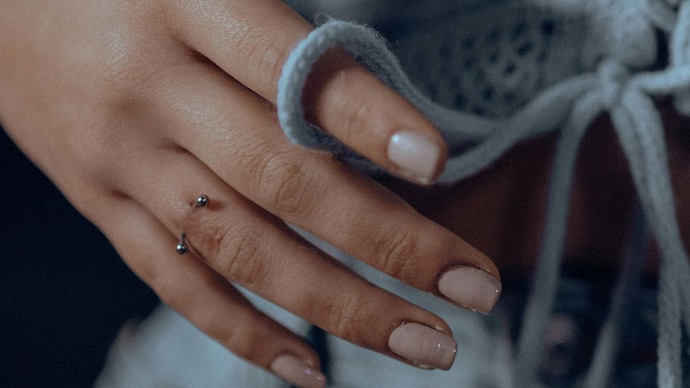

Why the most popular (and dubious) fad right now is North West's finger piercing
The Kardashian-Jenner family is known for starting trends, some of which are lighthearted, some of which are outrageous, and others of which are downright dubious. When Kim Kardashian and her 12-year-old daughter North West were spotted in Rome recently, everyone's attention was drawn to North's middle finger dermal piercing.Their excursion has generated a lot of controversy, with Kim facing backlash for permitting her preteen child receive the piercing. However, finger piercings have also gained popularity, and many people are now interested in learning more about them, their process, and their safety.A dermal piercing, also known as a micro dermal or single-point piercing, is a way to change your body where a piece of jewelry is inserted under the skin so that only the pretty top is visible, says Sahil Bali, an artist at Devil'z Tattooz in Delhi. Bali continues by explaining that dermal piercings are single-entry piercings, as opposed to conventional piercings, which enter one side of the skin and exit the other. "They are performed by using a needle or dermal punch to make a tiny pocket in the skin, after which an anchor base is inserted beneath the skin. After that, a decorative stud or gem is put onto the anchor," he explains, adding that these piercings may be done practically anywhere on the body, including the fingers, lower back, cheekbone, and chest, but they take longer to heal than conventional piercings."Dermal piercings need careful cleaning and protection, as they can get easily irritated or caught on things, making them slightly higher maintenance than normal piercings," says Dr. Shireen Furtado, senior consultant, medical and cosmetic dermatology, Aster CMI Hospital, Bengaluru.
Published 07 Oct 2025 09:43 PM


Can your hair texture change after postpartum?
Becoming a parent is among the most surreal experiences one can have. It seems as though your heart is bursting with love, but simultaneously, your body can feel more delicate and fatigued than it ever has after the ordeal of giving birth, even though you are amazed by the miracle it has just performed. With hormones fluctuating wildly and energy levels oscillating, you may discover that you are adapting to a new version of yourself on physical, mental, and emotional levels.In the midst of all these changes, your hair starts to narrate its own tale as well. Due to hormonal changes, many women notice significant hair loss in the months following childbirth. However, it often surprises people to learn that not only does the amount of hair change, but sometimes the texture does as well.Your hair may grow straighter if you have curls, or develop waves if it’s straight, and the texture of your locks can change in surprising ways, serving as a reminder that motherhood transforms more than just your routine—it transforms you.Many individuals observe that their hair becomes thicker, shinier, and fuller during pregnancy, resembling a natural glow-up. Dr. Ruben Bhasin Passi, a dermatology consultant at CK Birla Hospital in Gurugram, explains to India Today that this occurs because elevated estrogen levels prolong the hair growth phase, which stops normal shedding.This provides that additional volume and vitality. However, after the baby comes and hormone levels decrease, the narrative shifts. “When there’s a sudden decrease in hormone levels, the body adapts and hair experiences significant changes, which often surprises new mothers,” she adds. The doctor further explains that hair naturally cycles through phases of growth (anagen), rest (catagen), and shedding (telogen). During pregnancy, increased levels of estrogen keep more hair in the growth phase. After childbirth, when estrogen levels decrease, a number of these hairs enter the shedding phase simultaneously.
Published 06 Oct 2025 05:41 PM


The Reason for the Split The ultimate 'I'm done' move is Bob.
My heart was broken by him. So I cut my hair. Even though the numbers don't stack up, it feels like a fair exchange to women. According to the well-known quote by Coco Chanel, "A woman who cuts her hair is about to change her life." A fresh appearance turns into your armor; you feel prepared to confront, if not combat, the outside world and put an end to those existentially troubling ideas.After a few uncomfortable months in Paris, away from her family, her first (and only) love, Conrad, and her brother Jeremiah, with whom she almost got married, Belly did the same. In case you missed it (and have been living in a no-Internet zone these past several weeks), that was a reference to The Summer I Turned Pretty.By the way, in the first episode of Season 3, Belly’s then-fiance told her, ‘Hey, don’t ever cut your hair, okay?’ Yet here she was, sporting a French bob - ready to leave behind the wedding mess and finally embrace the new city, and her new self. Adding to the confident new look was a bold red lipstick - another first she chose to debut. “I think women often cut their hair after a breakup or when they want to let go of old baggage and signal to people that they’re ready for change,” Jenny Han, the show’s executive producer and author of the novels that the series is based on, told Vogue."The idea is that you can feel different if you look different," she continued. A hair makeover—more specifically, a haircut—has long been used as a coping strategy. But Belly is going straight for a bob instead of the traditional breakup bangs? That's a powerful move, and it serves as a reminder to the next generation of the strength of a breakup bob.In 2018, following her split from Justin Bieber, Selena Gomez got a bob. After her breakup with Joe Jonas, Gigi Hadid also stunned the red carpet with a bob, but it turned out to be a phony one (the bob, not the breakup). Additionally, we see Claire in the web comedy Fleabag go for the perfect combination: a haircut with bangs. It shouts, "I'm ready, come what may!" when done correctly, but Claire's, well, went terribly wrong.
Published 03 Oct 2025 09:43 PM


Health & Beauty
HEALTH & BEAUTY


Cough syrup deaths: TNFDA probe reveals Coldrif manufacturer's shortcomings
According to CDSCO sources, the investigation into the Kanchipuram-based Coldrif cough syrup producer, which was connected to child fatalities in Madhya Pradesh, has shown shortcomings in the Tamil Nadu Food and Drug Administration's enforcement of fundamental regulatory standards.They said that Sresan Pharma, which was granted a license by the Tamil Nadu Food and Drug Administration (TNFDA) in 2011, carried on operating undetected for more than ten years in spite of its inadequate infrastructure and many infractions of national drug safety regulations.According to the sources, a recent examination by the Central Drugs Standard Control Organization (CDSCO) revealed the unit's terrible conditions and complete disregard for Good Manufacturing Practices (GMP). "The CDSCO has not participated in any of Sresan Pharma's audits. This company was not included in any of the CDSCO databases since the CDSCO was not involved and the state FDA did not provide the CDSCO with any information on it, according to a source.Rule 84AB of the D and C Rules mandates that manufacturers update all of their certified items on the "Sugam" site, according to another source at the CDSCO.In order to facilitate improved monitoring, the regulation was notified to create a national database of all the authorized items in the nation. "The business failed to list its goods in the database. It did not follow this guideline as a result. According to the source, the state regulator is in charge of ensuring that the regulation is followed in the state.


Why the most popular (and dubious) fad right now is North West's finger piercing
The Kardashian-Jenner family is known for starting trends, some of which are lighthearted, some of which are outrageous, and others of which are downright dubious. When Kim Kardashian and her 12-year-old daughter North West were spotted in Rome recently, everyone's attention was drawn to North's middle finger dermal piercing.Their excursion has generated a lot of controversy, with Kim facing backlash for permitting her preteen child receive the piercing. However, finger piercings have also gained popularity, and many people are now interested in learning more about them, their process, and their safety.A dermal piercing, also known as a micro dermal or single-point piercing, is a way to change your body where a piece of jewelry is inserted under the skin so that only the pretty top is visible, says Sahil Bali, an artist at Devil'z Tattooz in Delhi. Bali continues by explaining that dermal piercings are single-entry piercings, as opposed to conventional piercings, which enter one side of the skin and exit the other. "They are performed by using a needle or dermal punch to make a tiny pocket in the skin, after which an anchor base is inserted beneath the skin. After that, a decorative stud or gem is put onto the anchor," he explains, adding that these piercings may be done practically anywhere on the body, including the fingers, lower back, cheekbone, and chest, but they take longer to heal than conventional piercings."Dermal piercings need careful cleaning and protection, as they can get easily irritated or caught on things, making them slightly higher maintenance than normal piercings," says Dr. Shireen Furtado, senior consultant, medical and cosmetic dermatology, Aster CMI Hospital, Bengaluru.


Can your hair texture change after postpartum?
Becoming a parent is among the most surreal experiences one can have. It seems as though your heart is bursting with love, but simultaneously, your body can feel more delicate and fatigued than it ever has after the ordeal of giving birth, even though you are amazed by the miracle it has just performed. With hormones fluctuating wildly and energy levels oscillating, you may discover that you are adapting to a new version of yourself on physical, mental, and emotional levels.In the midst of all these changes, your hair starts to narrate its own tale as well. Due to hormonal changes, many women notice significant hair loss in the months following childbirth. However, it often surprises people to learn that not only does the amount of hair change, but sometimes the texture does as well.Your hair may grow straighter if you have curls, or develop waves if it’s straight, and the texture of your locks can change in surprising ways, serving as a reminder that motherhood transforms more than just your routine—it transforms you.Many individuals observe that their hair becomes thicker, shinier, and fuller during pregnancy, resembling a natural glow-up. Dr. Ruben Bhasin Passi, a dermatology consultant at CK Birla Hospital in Gurugram, explains to India Today that this occurs because elevated estrogen levels prolong the hair growth phase, which stops normal shedding.This provides that additional volume and vitality. However, after the baby comes and hormone levels decrease, the narrative shifts. “When there’s a sudden decrease in hormone levels, the body adapts and hair experiences significant changes, which often surprises new mothers,” she adds. The doctor further explains that hair naturally cycles through phases of growth (anagen), rest (catagen), and shedding (telogen). During pregnancy, increased levels of estrogen keep more hair in the growth phase. After childbirth, when estrogen levels decrease, a number of these hairs enter the shedding phase simultaneously.


The Reason for the Split The ultimate 'I'm done' move is Bob.
My heart was broken by him. So I cut my hair. Even though the numbers don't stack up, it feels like a fair exchange to women. According to the well-known quote by Coco Chanel, "A woman who cuts her hair is about to change her life." A fresh appearance turns into your armor; you feel prepared to confront, if not combat, the outside world and put an end to those existentially troubling ideas.After a few uncomfortable months in Paris, away from her family, her first (and only) love, Conrad, and her brother Jeremiah, with whom she almost got married, Belly did the same. In case you missed it (and have been living in a no-Internet zone these past several weeks), that was a reference to The Summer I Turned Pretty.By the way, in the first episode of Season 3, Belly’s then-fiance told her, ‘Hey, don’t ever cut your hair, okay?’ Yet here she was, sporting a French bob - ready to leave behind the wedding mess and finally embrace the new city, and her new self. Adding to the confident new look was a bold red lipstick - another first she chose to debut. “I think women often cut their hair after a breakup or when they want to let go of old baggage and signal to people that they’re ready for change,” Jenny Han, the show’s executive producer and author of the novels that the series is based on, told Vogue."The idea is that you can feel different if you look different," she continued. A hair makeover—more specifically, a haircut—has long been used as a coping strategy. But Belly is going straight for a bob instead of the traditional breakup bangs? That's a powerful move, and it serves as a reminder to the next generation of the strength of a breakup bob.In 2018, following her split from Justin Bieber, Selena Gomez got a bob. After her breakup with Joe Jonas, Gigi Hadid also stunned the red carpet with a bob, but it turned out to be a phony one (the bob, not the breakup). Additionally, we see Claire in the web comedy Fleabag go for the perfect combination: a haircut with bangs. It shouts, "I'm ready, come what may!" when done correctly, but Claire's, well, went terribly wrong.
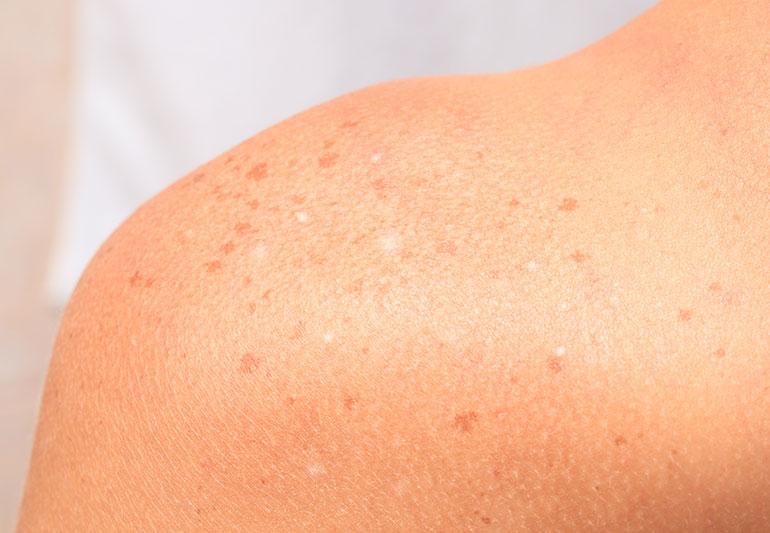

The reason those white patches on your skin may actually be connected to the sun
After a nice beach holiday, you return not only with memories but also with a vacation tan. Indeed, we can all relate! However, have you observed white patches developing on your skin, particularly on your face, following a beach vacation? Whether one has been on a beach holiday or not, they can show up after prolonged sun exposure; these are known as white spots.These sunspots manifest as small, flat white patches, typically appearing on areas exposed to the sun, like the arms, legs, and face. They are generally non-itchy and localized. They simply sit there, leaving you to wonder what their true cause is.This normally occurs when the skin loses pigmentation due to extended exposure to the sun. Everyone knows by now that the sun's UV rays can harm. As a result, in the course of this process, melanocytes (the cells responsible for melanin production) might cease to function in specific regions, resulting in white patches. They can manifest not just on the face, but also on the back and upper arms.Thus, whether it’s a beach vacation or just excessive exposure to the blazing sun, tanning accentuates those patches even further.Thus, whether it’s a beach vacation or just excessive exposure to the blazing sun, tanning accentuates those patches even further.The evident question is: are they truly detrimental? Umm… not so much. “They indicate long-term exposure to the sun but are not a disease and pose no threat. Dr. Ridhima Arora, MD, dermatology at Radix Healthcare, informs India Today that “It’s more cosmetic than medical.”It is certainly sun damage, but it is only at a superficial pigment level. Dr. Arora adds, “They do not elevate the risk of cancer or lead to other skin issues.” Should you freak out then? Not exactly. Is it necessary to pay attention? Certainly. Though not everyone is at risk for its development, farmers, outdoor workers, and those on sunny holidays may have a slightly higher susceptibility to white spots due to their sun exposure. Age may also play a role. Due to the cumulative effects of sun exposure over many years, they are most prevalent after the age of 40. Although younger individuals are not entirely overlooked, they are comparatively at a lower risk. Nevertheless, be careful, all!It is certainly sun damage, but it is only at a superficial pigment level. Dr. Arora adds, “They do not elevate the risk of cancer or lead to other skin issues.” Should you freak out then? Not exactly. Is it necessary to pay attention? Certainly. Though not everyone is at risk for its development, farmers, outdoor workers, and those on sunny holidays may have a slightly higher susceptibility to white spots due to their sun exposure. Age may also play a role. Due to the cumulative effects of sun exposure over many years, they are most prevalent after the age of 40. Although younger individuals are not entirely overlooked, they are comparatively at a lower risk. Nevertheless, be careful, all!
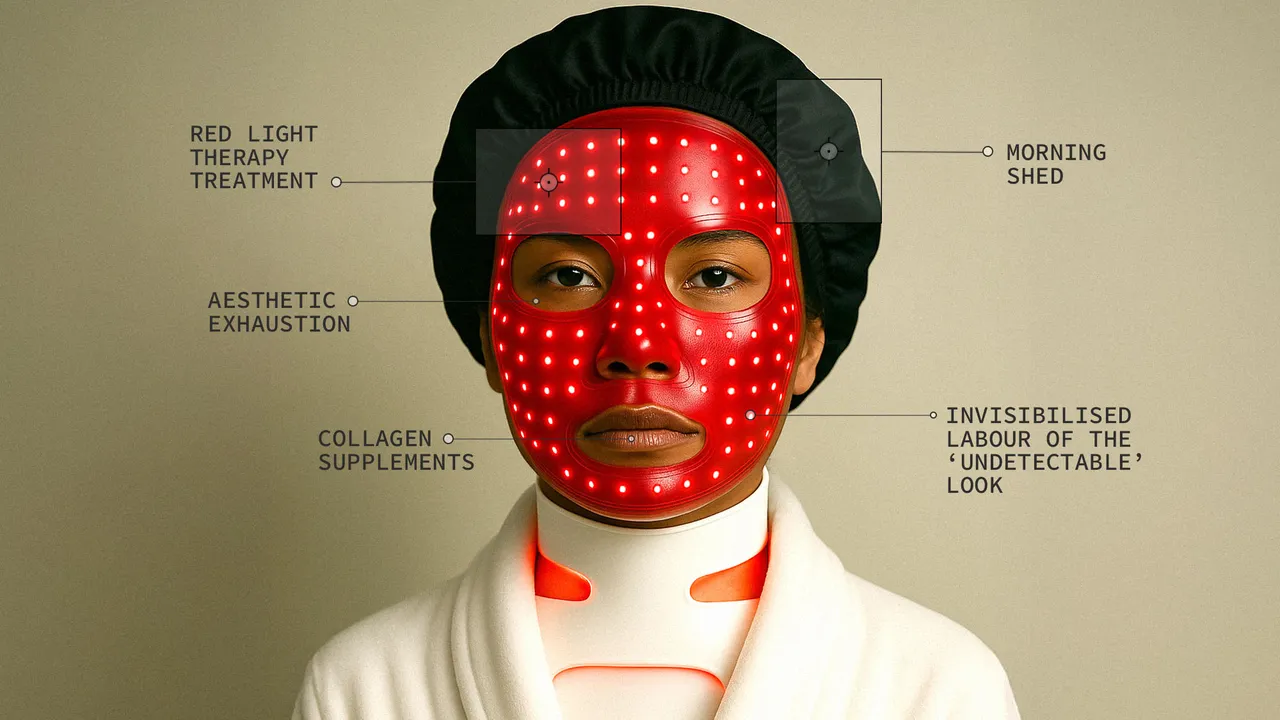

The increasing prevalence of beauty burnout
Are you feeling weary of your skincare routine, as if it has become more of a chore than a treat? It’s possible that you’re going through beauty burnout. Here’s how to reset it and enjoy it once more.Do you not sense that the pursuit of perfection has become unending, having begun as merely fundamental self-care? Most of us started with the fundamental CTM routine: cleansing, toning, and moisturizing. However, as time went on, the beauty industry's unending influx of new products and trends led us to adopt complex rituals involving 8 to 10 steps.Rather than being refreshing, this unending routine has turned into a source of fatigue. What used to be a pleasure in skincare has turned into pressure, and skipping a step now feels like a failure.For many beauty enthusiasts, a calming ritual at the end of the day has turned into just another chore on an already lengthy to-do list, often performed with a sigh or, even worse, a cringe.The outcome? An epidemic of beauty burnout. Indeed, it is authentic. According to Dr. Shireen Furtado, a senior consultant in medical and cosmetic dermatology at Aster CMI Hospital in Bengaluru, in an interview with India Today, beauty burnout occurs when individuals begin to feel fatigued, stressed, or inundated by their beauty and skincare regimens. "Due to the constant emergence of numerous products, treatments, and trends, many people experience pressure to stay abreast of everything." What starts out as self-care can gradually transform into a burdensome responsibility. Rather than feeling relaxed, individuals might experience guilt if they skip a step or fail to purchase the latest item. She adds, "This unrelenting pursuit of beauty can rob self-care of its joy, turning it into a source of stress.What is the reason for it occurring? Dr. Furtado states that beauty burnout is occurring due to individuals attempting to accomplish excessive amounts for the sake of self-care and beauty. With the daily promotion of countless skincare products, makeup trends, and wellness rituals, individuals often feel pressured to adhere to all of them. The doctor believes that social media exacerbates this pressure by showcasing influencers with 'perfect' routines and impeccable results, leading to unrealistic expectations. Many individuals pursue the notion of perfection instead of finding satisfaction in a simple routine. The cosmetics sector promotes the idea of buying and doing more, which can come across as costly and draining. Such ongoing exertion transforms what should be a leisurely pastime into something laborious.


A nutritionist clarifies the importance of timing, cooking methods, and variety when incorporating dals into your diet.
Dals are a staple food on most Indian plates, but not everyone is aware that how you cook and eat them can significantly affect their nutritional impact. In a recent Instagram post, holistic health nutritionist Khushi Chhabra explained, “Dals are a powerhouse of complex carbohydrates, plant protein, fibre, vitamins, and minerals – but did you know that how you cook and eat them makes all the difference?”She proceeded to emphasize several practical details that many neglect regarding dals: the optimal consumption method for each variety to maximize nutrition, the individuals who should include them in their diet and those who might need to steer clear of them, the ideal timing for their consumption, and the advised daily amount. Chhabra provided additional tips for each type of dal, highlighted incorrect consumption methods, and suggested easy techniques to enhance their digestibility and gut compatibility. A nutritionist explains that proper preparation of dal can enhance its health benefits by soaking it to reduce gas-causing compounds and cooking it with spices like ginger and asafoetida to aid digestion. To ensure a complete protein profile, it is beneficial to incorporate a variety of dals with grains, while consuming them in moderation and often pairing them with vegetables can help balance the diet and promote overall health.Soak before cooking: To lessen anti-nutrients such as phytic acid and oligosaccharides, which can lead to gas and hinder protein absorption, dals should be soaked for a few hours. Wash thoroughly: Before soaking, wash the dal 3-4 times to eliminate any impurities. Don't throw away the soaking water: It can be used to cook the dal, keeping its essential nutrients intact


"From assuming all fruits are healthy to avoiding protein: Five typical errors people make when fasting "
Starting too forcefully, overeating within the eating window, skipping hydration, disregarding personal needs, and relying too much on processed foods are five common mistakes made when fasting. To prevent severe pressure or dietary deficiencies, it's critical to choose complete, nutrient-dense foods, including proteins, throughout the eating window and to pay attention to your body's cues.Beginning too violently The Error: The body may get overwhelmed if extended or frequent fasts are initiated without a progressive adaptation. Ways to Prevent: Start with shorter fasting durations (e.g., 12 hours) and increase them gradually as your body gets used to it.Overindulging during the window for eating The Error: Overindulging in processed or unhealthy foods during permitted eating hours in an attempt to "make up" for the fasting period, which defeats the purpose of fasting. Ways to Prevent: To make sure you're still in a calorie deficit overall, concentrate on eating wholesome, whole meals and pay attention to what you eat. Overindulging during the window for eating The Error: Overindulging in processed or unhealthy foods during permitted eating hours in an attempt to "make up" for the fasting period, which defeats the purpose of fasting. Ways to Prevent: To make sure you're still in a calorie deficit overall, concentrate on eating wholesome, whole meals and pay attention to what you eat.Not drinking enough water The Error: Dehydration occurs when people cut back on their meal consumption but neglect to consume enough water or other non-caloric drinks. Ways to Prevent: Water, unsweetened tea, and other calorie-free beverages should be consumed in large quantities throughout the day, particularly when fasting.
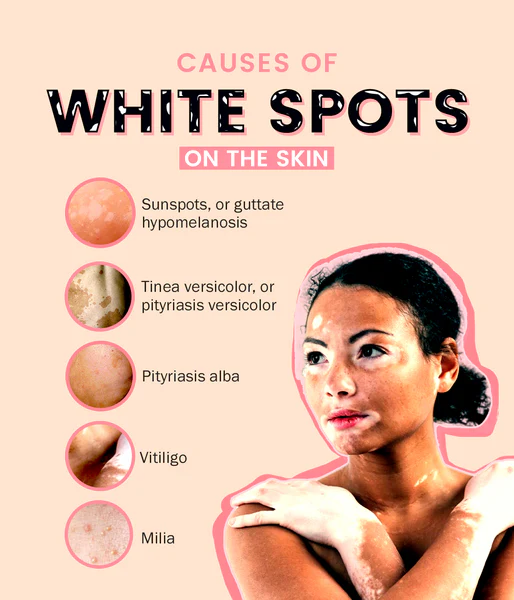

Why the sun may be the cause of those white spots on your skin
After a pleasant beach vacation, you not only bring back memories but also a vacation tan. Yes, we can all identify!However, after a beach vacation, have you seen white spots on your skin, particularly on your face? White spots, whether or not you're on a beach vacation, can also show up after spending a lot of time in the sun.These sunspots are small, flat, white patches that typically show up on parts of the body that are exposed to the sun, like the face, arms, and legs. They don't spread widely and are often not irritating. All they do is sit there and leave you wondering what caused them. This usually happens when prolonged sun exposure deprives the skin of pigmentation. It's common knowledge by now that the UV rays of the sun are harmful. Therefore, during this process, melanocytes (the cells that produce melanin) may lose their function in certain areas, leading to white patches. These can appear not only on the face but also on the back and upper arms.“They are a harmless sign of long-term sun exposure, not a disease. It's more of a cosmetic than medical,” Dr Ridhima Arora, MD, dermatology, Radix Healthcare, tells India Today.


Can the texture of your hair change after giving birth?
One of life's most bizarre experiences is becoming a parent. After the trauma of childbirth, your body may seem more delicate and worn out than ever, even if you are still in wonder of the marvel it has just made. At the same time, your heart feels like it is overflowing with love. Energy fluctuates in waves, hormones are everywhere, and you have to adapt to a new physical, mental, and emotional version of yourself.Your hair also starts to tell its own story during all of these changes. Hormonal changes in the months following childbirth cause considerable hair loss in many women. However, it is frequently unexpected to learn that not only does the amount of hair alter, but occasionally the texture does as well.Many women feel that their hair is fuller, shinier, and thicker during pregnancy—almost like a natural glow-up. This occurs because elevated estrogen levels prolong the hair's development phase, inhibiting regular shedding, according to Dr. Ruben Bhasin Passi, dermatological consultant at CK Birla Hospital in Gurugram, who spoke to India Today.This adds that extra vigor and volume. However, things take a turn for the worst when the baby is born and hormone levels fall. "When hormone levels suddenly drop, the body adjusts, and hair goes through noticeable changes, often leaving new mothers surprised by the difference," she says.The doctor continues by explaining that hair naturally goes through three phases: anagen (growing), catagen (rest), and telogen (shedding). Pregnancy-related elevated estrogen retains more hair during the development period. Many of those hairs transition into the shedding phase simultaneously with the postpartum decline in estrogen.Hormonal changes, according to Dr. Passi, can affect the structure of hair follicles and alter the way new hair grows in addition to causing shedding. This could change the oil balance, thickness, or curl pattern of the hair. Dr. Ravali Yalamanchili, senior dermatology consultant at Arete Hospitals in Hyderabad, notes that hormonal changes aren't the only factor influencing postpartum hair texture changes; your body's physical and emotional stressors also play a significant role.


The Best-Selling Author Explains Why French Women "Don't Get Fat" Even When They Eat A Lot of Butter and Chocolate
Have you ever noticed that French people, especially women, stay in shape despite their not-so-healthy food preferences? From bread and cheese to wine and dessert, they seem to enjoy cuisines that are generally seen as a sure-shot route to gaining weight. Yet, they rarely appear overweight. Bestselling French-American author Mireille Guiliano, best known for the 2004 book French Women Don't Get Fat, once spoke about the reason behind French women staying in shape in an interview. Have you ever seen that French people, particularly women, maintain their physical fitness in spite of their unhealthy eating habits? They appear to like foods that are typically thought of as a surefire way to put on weight, from bread and cheese to wine and dessert. They hardly ever seem overweight, though. In an interview, Mireille Guiliano, a top-selling French-American author best known for her 2004 book French Women Don't Get Fat, discussed why French women maintain their fitness."Because they eat for pleasure and they eat with their five senses," the author said in response to the host's question on why French ladies don't get fat. The author merely said, "No," when the interviewer inquired as to whether French ladies track calories.Mireille Guiliano went on to explain, "We eat slowly. We take our time. In between bites, we set down our knife and fork. Actually, it does this by ensuring that your taste senses are satisfied after a few bites if you eat calmly and without stress. Therefore, you don't need to eat a lot. We dislike foods that are low in fat and sugar because they don't taste good."Butter is not something that's bad for you," Mireille Guiliano continued, highlighting the importance of eating in the proper proportions. There are no health risks associated with chocolate. Duck fat is not unhealthy, but only if consumed three times a day and in large quantities, as is the case in many nations.
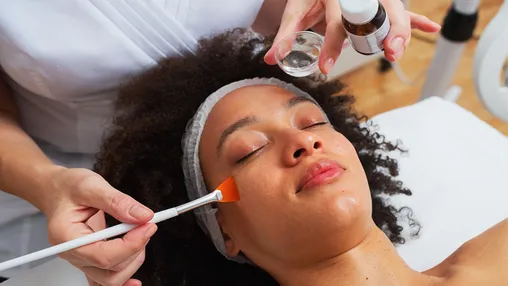

Why it's never a good idea to do a DIY chemical peel
People all over the world are enamored with the idea of having flawlessly clear skin, whether they have glazed or glass skin. They are using expert treatments, such as wine baths and salmon sperm facials, in addition to skincare and makeup to reach their goals.In recent years, chemical peels have been increasingly popular among these. However, as members of the social media generation, it appears like there is a do-it-yourself solution for practically anything. By combining various acids, many people have even begun trying chemical peels at home.Even while your nani-dadi ke nuskhe were safe enough to try at home, trying a chemical peel is a very different matter and might cause significant skin damage. But first, comprehend...According to Dr. Ruben Bhasin Passi, dermatology consultant at CK Birla Hospital in Gurugram, "Chemical peels are skin treatments that use acid-based solutions to exfoliate the outer layers of the skin," India Today reports. According to her, these treatments function by encouraging cell turnover, breaking down dead skin cells, and boosting the creation of collagen.Peels can treat problems like acne, hyperpigmentation, fine wrinkles, and uneven texture, depending on their strength (light, medium, or deep). "While deeper peels like trichloroacetic acid penetrate deeper for more dramatic results, light peels like alpha-hydroxy acids target the epidermis," Dr. Passi continues.Additionally, according to Dr. Shifa Yadav, dermatology and cosmetology consultant at Artemis Hospitals in Gurugram, this procedure aids in the skin's regeneration of new, healthier cells, giving it a smoother, more even complexion.It is frequently used in skin care clinics to improve the appearance and feel of skin, but in order to prevent irritation or injury, it must be applied and maintained properly.Even though experimenting with at-home hacks can be enjoyable, practical, and even economical, it's crucial to keep in mind that not all conditions can be safely treated using do-it-yourself methods. To prevent long-term damage, certain beauty procedures—particularly those involving potent chemicals—require professional knowledge and expertise.According to Dr. Vidushi Jain, medical head of Dermalinks in Delhi-NCR, homemade peels frequently employ the incorrect acid concentrations without taking the safety of the skin into account. They lack the professional followup that such procedures require, which can lead to burns, infections, uneven pigmentation, and delayed healing. "Many kits have strong acids like TCA or glycolic acid that can harm the skin," says Dr. Yadav.


The newest short-lived beauty fad on TikTok? Appearing worn out
Dark shadows frame Jenna Ortega's eyes, which are somewhat smeared. She has a pale face with a hint of gray on her cheekbones. She has a hint of purple on her lips. She appears worn out, but that's the goal. "Tired Girl," the newest Gen Z makeup fad, embraces the appearance of not having gone to sleep.As long as there have been beauty standards, individuals have worked together to avoid appearing worn out. At least in part, the purpose of concealer, eye cream, and corrector sticks is to make us appear alert and youthful. In the past, looking exhausted has been linked to aging, poor health, and unattractiveness. On the other hand, Tired Girl beauty embraces the flaws that we have historically attempted to hide. The trend's contemporary poster girl is Wednesday Addams, the gloomy and emotionally reticent daughter of the Addams Family and the subject of Tim Burton's Netflix series, in which Ortega plays the lead. Similar to the first season, series two features the actor's pale skin and shadowed under-eyes, a style she just replicated on the red carpet at the London premiere of the program. Those who were not born in the Gen Z generation will be able to identify earlier allusions—consider a young Natalie Portman in "Leon" or Angelina Jolie in "Girl Interrupted."Actress Lily Rose-Depp, model and musician Gabbriette, and influencers Emma Chamberlain, Danielle Marcan, and Lara Violetta are among the other well-known modern admirers of the cosmetic trend. Some of the most popular tutorials on how to get the sleep-deprived appearance have received over 300,000 views, and as of late July, sleepy girl makeup has become a TikTok category.
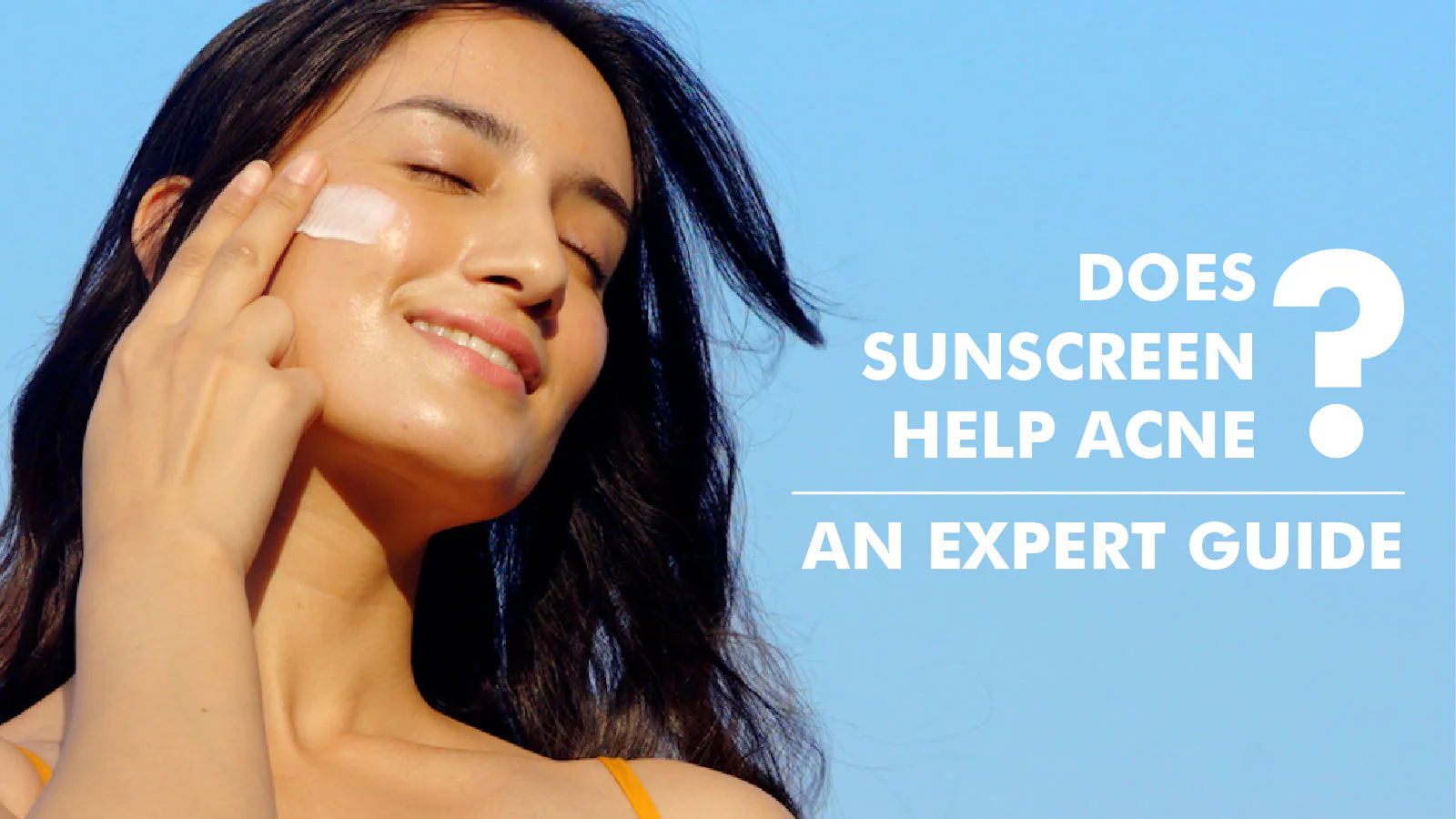

Is sunscreen the solution to your acne problem?
Everything seems normal after a day in the blazing heat, including perspiration streaming down your face and the accumulation of oil and grime, until a pimple appears the following morning. And no, there is no rent included.It can be difficult to discover the correct remedy when your feed is overflowing with viral suggestions, 101 do-it-yourself solutions, and unending unwanted counsel. Understanding the underlying problem is the first step. Next comes the crucial query, "How can I fix it quickly?"According to experts, acne is not primarily caused by the sun. Sunlight cannot be regarded as a primary cause of acne, according to cosmetic dermatologist Dr. Ameesha Mahajan, founder of Eden Skin Clinic. Although it's a transient effect, sun exposure can cause people to feel dry and acne-like. "The sun's UV rays have the power to dehydrate the skin, impair its defenses, and cause inflammation. According to her, this causes an increase in sebum production, which is comedogenic—it clogs pores, causes blackheads, and can result in breakouts.Cosmetologist and KorinMi co-founder Jenovia Daun Jung shares this opinion. She warns that because they naturally create more sebum, persons with oily or mixed skin are more at risk. While people with combination skin frequently have breakouts in the oily T-zone during hot, muggy weather, sensitive skin might develop rashes. "I often see even dry or sensitive skin types break out post-sun because of barrier disruption and improper aftercare, such as skipping hydration or using harsh cleansers," Jung continues.Therefore, although the sun may not directly cause acne, it does create the conditions for breakouts, such as irritation and oiliness. This leads us to the next query: how do you really handle it? Although it might seem like the obvious next step to incorporate sunscreen into your daily routine, is it actually sufficient to protect your skin?
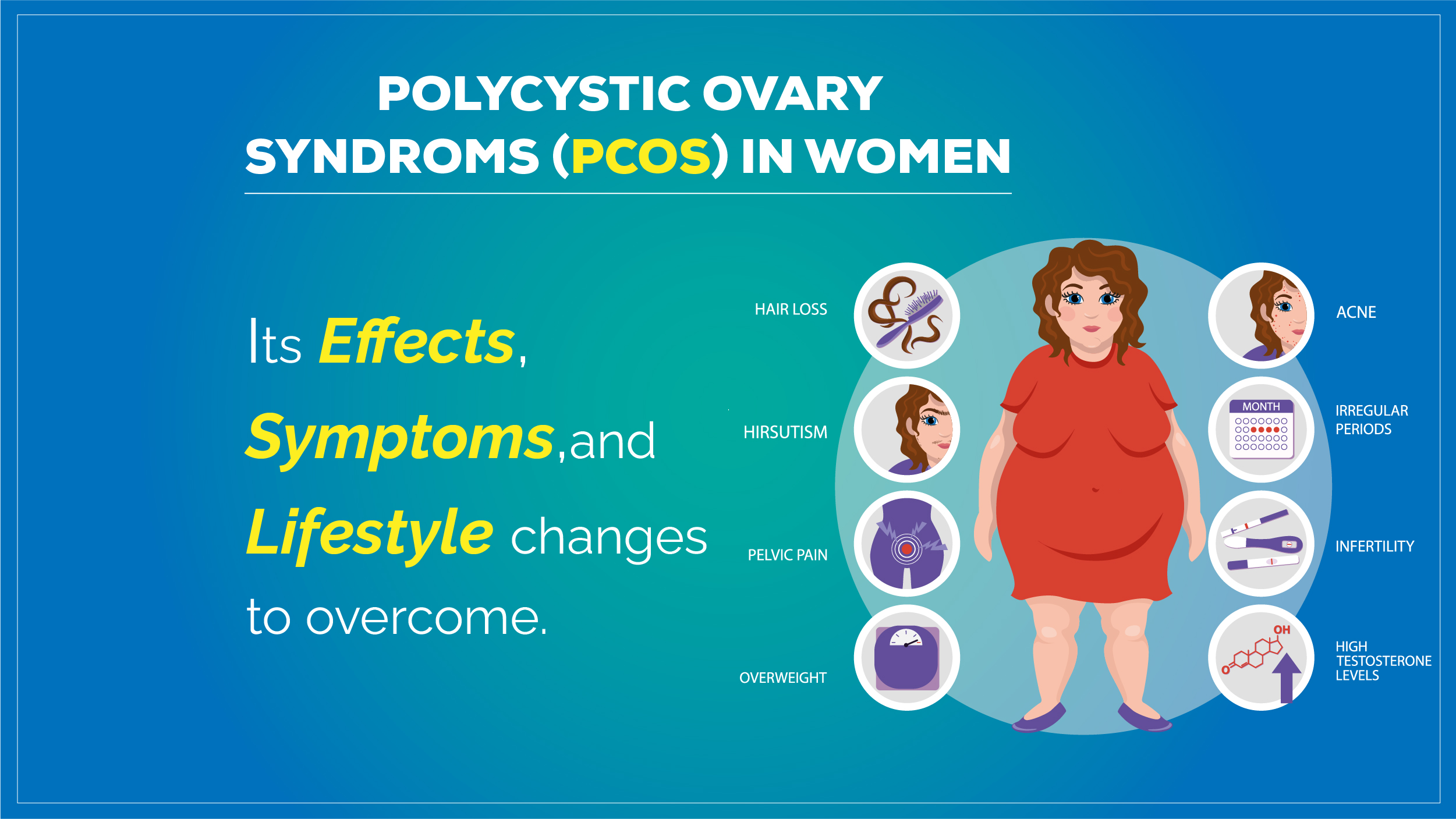

Is PCOS inherited or a result of lifestyle choices?
Ask any group of young women today, and it's likely that many of them have heard of or dealt with PCOS, or polycystic ovarian syndrome. Despite its widespread occurrence, there is still uncertainty over its true nature, how it differs from PCOD, and if it is inherited or caused by lifestyle choices. A hormonal condition known as PCOS occurs when the ovaries create more androgens, or "male hormones," than is typical. Ovulation is disturbed, which results in infertility, weight gain, acne, irregular periods, and excessive hair growth.However, PCOD (polycystic ovarian disease) is a little different. Cysts are caused by the ovaries releasing a large number of immature or partially developed eggs in PCOD. Although the two disorders have similar names, PCOS is more dangerous since it affects the entire body and is a metabolic and hormonal disorder, whereas PCOD is confined to the ovaries and is typically easier to treat.It is not a straightforward "either-or," according to Dr. Nidhi Sharma Chauhan, an obstetrician and gynecologist at Saifee Hospital in Mumbai. Both lifestyle and genetics are involved. There appears to be a hereditary component to PCOS. According to research, excessive levels of androgens or environmental contaminants during pregnancy increase the risk of PCOS in the developing fetus. Additionally, it can run in families, and some populations, like Asians, have a higher propensity for it, she notes.This does not imply that PCOS will develop in all individuals with a genetic connection. Dr. Chauhan explains that not everyone who has a hereditary risk to PCOS will get it. Lifestyle is really important. The illness can be triggered by factors such as weight increase, long-term stress, sleep deprivation, physical inactivity, and improper eating habits.There is no "one-size-fits-all" approach to PCOS. Some women suffer from infertility and irregular periods, while others have metabolic issues like weight gain and insulin resistance. Some women have all of these symptoms at once. There are several different types of PCOS. According to Dr. Chauhan, "some people may have the full spectrum, while others may have only one or two symptoms." This complicates diagnosis and necessitates a customized treatment strategy. Awareness is crucial because PCOS affects women in very different ways than illnesses with a distinct set of symptoms.


Using its experience, Expanscience develops responsible nutraceutical active ingredients.
Laboratoires Expanscience, which has historically concentrated on creating plant-based cosmetic chemicals, is now growing its business to include dietary supplements. This move toward nutraceutical ingredients is a response to consumer demand for certified ingredients as well as a continuation strategy. Similar to the cosmetics industry, the nutritional supplement industry has strict standards for efficacy, traceability, and naturalness. The Expanscience Group thinks it can satisfy the expectations of this quickly expanding market by offering a pertinent solution by utilizing its experience in this area."Nutraceutical companies are leading the way in obtaining certifications like Fair for Life and ROC (Regenerative Organic Certified), which perfectly complement our positioning. Transparency and sustainability have been central to Expanscience's purpose for over 20 years. We continue to uphold the highest ethical and environmental standards as a B Corp-certified business," says Armelle Le Péniec, Director of Laboratoires Expanscience's Cosmetic and Nutraceutical Actives Division.Tulsinity Bio, an extract of holy basil (Ocimum sanctum L.) cultivated using regenerative agricultural methods and certified by ROC and Fair for Life, was just introduced by the firm to commemorate the debut of this new catalog. It has been demonstrated through cortisol tests to lower stress and to improve the flexibility and density of the skin barrier, which is at the intersection of beauty and well-being. "Our dedication to holistic solutions is demonstrated by the development of an active ingredient that addresses stress and skin health—consistent with other cosmetic actives we offer, such as Ayuredi, which is also derived from holy basil," the director says.With applications ranging from nutricosmetics to the whole wellness market for dietary supplements, including menopause, vitality, sleep, etc., Expanscience aims to build a portfolio enhanced with one to two new nutraceutical active ingredients annually. “Our strategy aims to offer a range that complements our cosmetic active ingredients, with a similar model, namely highlighting the effectiveness of our natural ingredients and sourcing guarantees. "We want to reach a turnover level that is comparable to the cosmetic active ingredients business in ten years," says Armelle Le Péniec. With the help of its local subsidiary, Expanscience is focusing on the North American market in addition to Europe. Asia, which has a strong interest in this kind of goods, may potentially be a potential growth market.


Adwaita Nayar is reappointed as Executive Director by Nykaa
At the 13th Annual General Meeting of FSN E-Commerce Ventures, the parent company of Nykaa, a cosmetics and fashion retailer, shareholders confirmed Adwaita Nayar's reappointment as Executive Director. Since the beginning, Nayar, who is also the CEO of Nykaa Fashion, has been essential to the vertical's growth. Nykaa Fashion served 8 million customers and ended FY25 with a Gross Merchandise Value (GMV) of ₹3,800 crore, per a regulatory filing. She is a co-founder of Nykaa and has been the Executive Director since July 1, 2021. She actively participates in product development, operations, and marketing. Nayar earned with a cum laude Bachelor of Applied Mathematics from Yale University and an MBA with distinction from Harvard Business School. She returned to FSN Brands in 2017 as CEO, concentrating on expanding Nykaa's offline retail presence, after finishing her studies.The re-appointment of Adwaita Nayar as executive director has been approved by Nykaa shareholders. She has greatly expanded the vertical as CEO of Nykaa Fashion, serving 8 million clients and reaching a Gross Merchandise Value of ₹3,800 crore in FY25.


Rice, rinse, repeat: A method for eliminating hair loss issues with rice water
Like a cunning direct message, haircare issues appear in life and never seem to go away. Hair fall, split ends, and frizzy hair are frequent problems that practically everyone complains about. However, sometimes a straightforward home remedy is all that is needed to solve the problem.In nations like China and Japan, people have been rinsing their hair and nourishing the scalp with misty water that has a faintly milky quality. Some promote it as a hair elixir. We are referring to rice water, which is a starchy, hazy liquid that is produced by boiling or soaking rice.People have been using rice water for generations. It is thought to improve hair health, lessen breakage, and give hair a glossy, lengthy appearance.Rice water is more than simply a do-it-yourself fad. Although it enjoyed a brief period of popularity, its true origins date back hundreds of years. A nutritional powerhouse is fermented rice water. It contains vital proteins, vitamins, minerals, and certain amino acids that support the growth and health of hair follicles. Protein and amino acid concentration may contribute to the hair's strength, volume, and texture. The main ingredient is inositol, a carbohydrate that increases the suppleness and strength of hair. For this reason, rinsing with rice water can improve texture, encourage development, and help with mending. Despite the lack of scientific proof, rice water has become increasingly popular. A number of hair care companies have even launched product lines that include conditioners, hair treatments, and other items made from rice.Why is rice water a convenient option? Since it's essentially a beauty elixir that's conveniently located on your kitchen shelf. This is how you can utilize it: When the rice water is done, apply it to your hair and spend a few minutes massaging your scalp gently. This enhances blood circulation in addition to assisting with the water's uniform distribution. Additionally, you can use it after shampooing. Before rinsing, let it stay for 20 to 30 minutes to give the nutrients time to absorb.



















